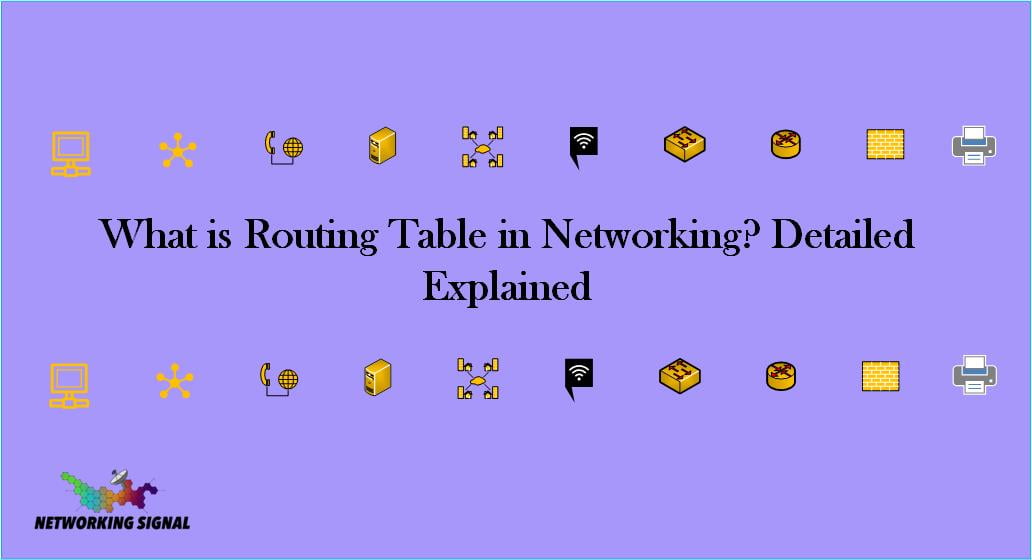What is Routing Table in Networking?
A routing table is a data table stored on a router or networked computer that lists the routes to various network destinations. The table includes network addresses and other information needed to make decisions about which route to use when sending information packets over an interconnected set of networks.
What is the Use of a Routing Table?
Here are the primary uses of routing tables:
- It enables routers to forward packets based on their destination network address.
- It stores information about directly connected networks and remote networks that are reachable through another router or gateway device.
- It helps prevent routing loops and wasted bandwidth by making sure packets do not take the same route across a network multiple times.
- It can also be used to implement policy-based routing, which allows administrators to define rules for how data should be routed on the network.
- It makes it easier to troubleshoot network problems by providing information about the current path that packets are taking.
- It can be used to prioritize traffic and optimize routing between networks for better performance.
- It can also help to secure a network by allowing administrators to control which paths are allowed for certain kinds of traffic.
How We Can Check the Routing Table in the Router?

Routing Table check via CLI
Here are the steps to check the routing table in a router via CLI:
1. Connect to the router by logging into its command line interface (CLI).
2. Type in the command “show IP route” or “show ipv6 route” depending on what kind of network address is being used.
3. The routing table will appear and can be viewed in the CLI window.
4. Once you have finished viewing the routing table, type “exit” to close out of the router’s CLI session.
Example:
- Router# Show IP route
What is the Connected and Local Route in Routing Table?
Connected Route
A connected route is a route that is directly connected to the local router and can be used to reach other networks. It’s the most direct path for data to travel, so it has a priority of 0 in the routing table. Connected routes are also referred to as “directly attached networks” and are typically denoted in a routing table by “C”.
Local Route
A local route is a route that is used to reach locally connected networks and hosts. It has a higher priority than connected routes and is usually denoted in the routing table with an “L”. Local routes are also referred to as “statically configured routes”.

